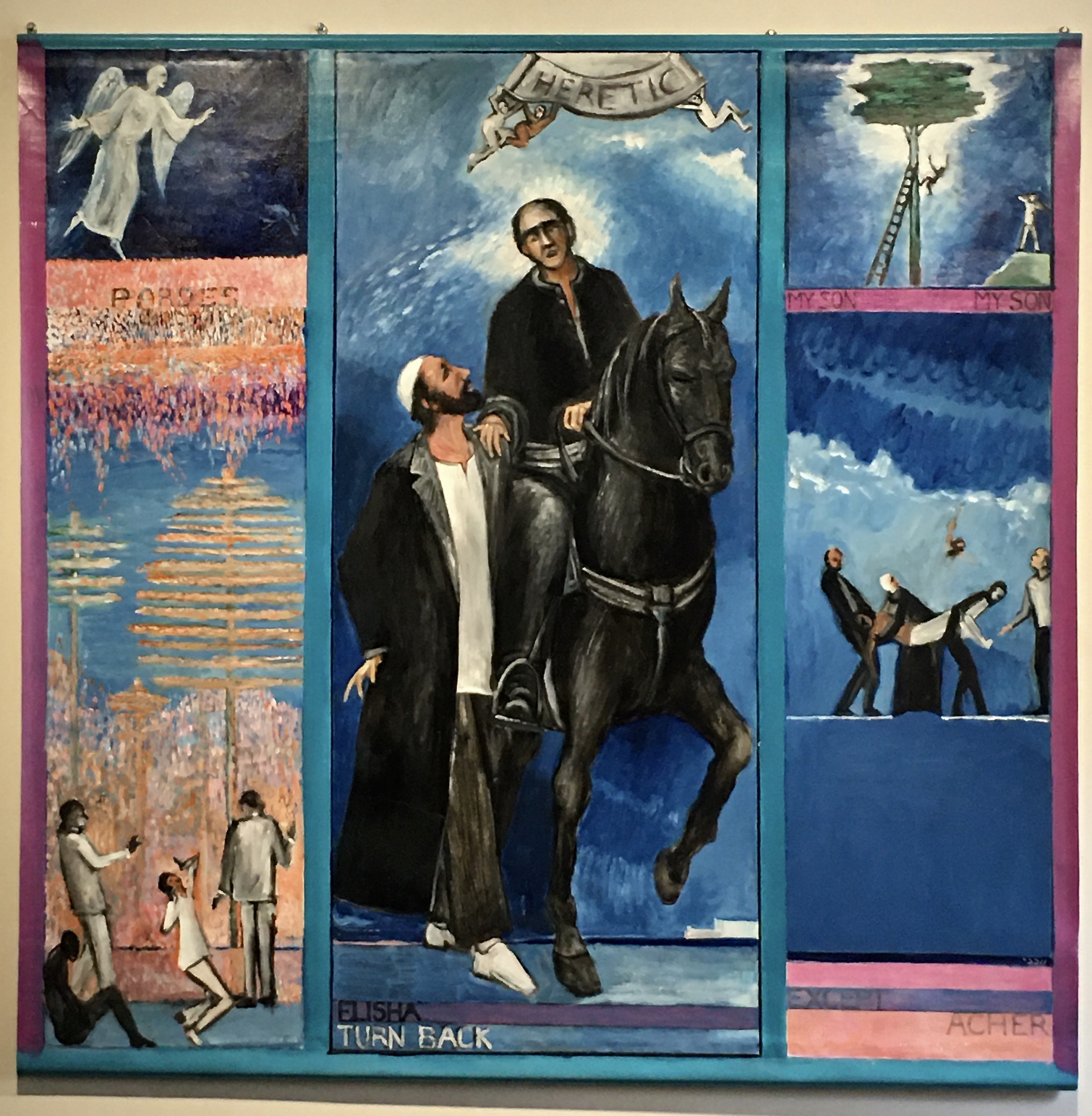A Personal View: Elisha Triptych (2019) by Richard McBee (60” x 60”)
Created for Spinoza: Marrano of Reason, Amsterdam, March 2019
Baruch Spinoza’s role as one of our greatest groundbreaking heretics can only be fully appreciated in light of the role heresy plays in the complex history of the Jewish people. Over and over again the Biblical narrative is built upon transgression. Eve starts humankind off with the sin of sins; Disobedience, and we Jews haven’t missed an opportunity to challenge God since. The Talmud is fascinated by Elisha ben Abuyah, arguably our greatest and most famous heretic, known as “Acher” i.e., the “Other.” Baruch Spinoza is his spiritual brother.
Elisha was one of the great sages of the Mishnaic period (1st century CE) who was declared a heretic by his contemporaries. The specific cause of his heresy is unclear from the Talmud. Interestingly, Baruch Spinoza’s specific cause of heresy in 1655 at the age of 23 is also not specified, except to condemn his “abominable heresies which he practiced and taught and about his monstrous deeds.”
And yet surprisingly, according to the Talmud, Elisha is one of the celebrated four who “Entered Pardes”, i.e. paradise, which is interpreted as experiencing a mystical revelation. “Four men entered the pardes — Ben Azzai, Ben Zoma, Acher [that is, Elisha], and Akiva. Ben Azzai looked and died; Ben Zoma looked and went mad; Acher looked and lost his faith; Akiva entered in peace and departed in peace.” The exact meaning of this passage is the wellspring of Jewish mystical tradition for the next 500 years.
One important cause of Elisha’s heresy was witnessing a classic case of God allowing evil. When a father commanded his child to climb a tree to perform the mitzvah of “sending away the mother bird” and, upon doing so, the child fell from the tree and died, Elisha’s faith was shaken to the core. Both honoring one’s parents as well as “sending away the mother bird” explicitly promises a long life in the Torah. And yet the child died.
The Talmud relates that Elisha was riding a horse on Shabbos (a Sabbath violation) and his student Rabbi Meir was walking alongside, discussing Torah. They reached the limit of permissible walking on Shabbos whereupon Elisha told his student; “Stop!” Rabbi Meir said: So you too, must come back. Elisha said: I cannot because I hear the divine voice from Heaven: “Return, O backsliding children… except for Elisha, who knew my strength and yet rebelled against Me.” Heresy represents the consequences of choosing intellectual freedom (heresy: from the Greek, to choose). It is the heritage of all significant art.
El Greco’s San Martin and the Beggar (National Gallery, Washington, D.C.) seems to be a ghostly depiction of Rabbi Meir walking alongside Elisha riding his horse on Shabbos. The quiet empathy of the Saint for his impoverished fellow poignantly encapsulates Elisha’s bittersweet concern for his loyal student.
